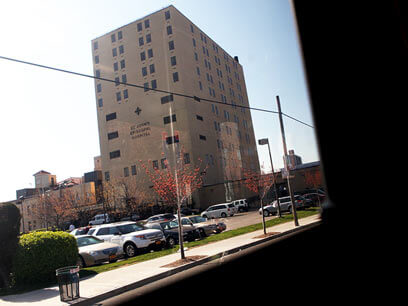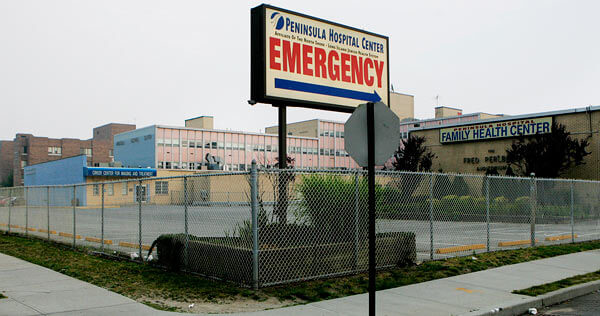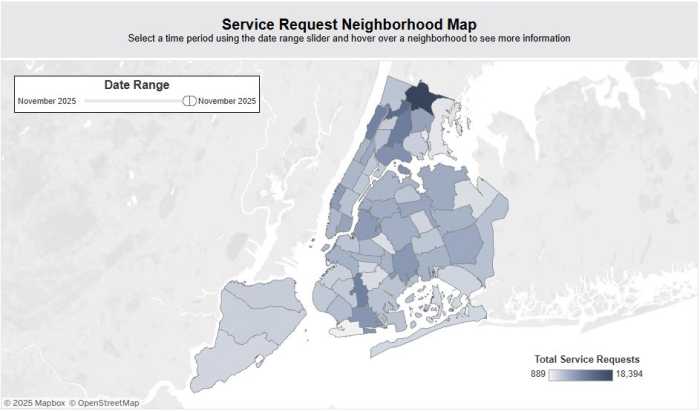By Steve Mosco
Diagnosing the future of health care in Queens requires plenty of reflection on the past— an examination of hospital closures and overflowing emergency rooms, followed by a prescription for viable solutions.
The borough, and its diverse population of more than 2.2 million, lost four hospitals between 2008 and 2012. Parkway Hospital in Forest Hills was the first to close its doors, emptying 251 beds and dissolving the jobs of approximately 600 people.
The flat lining of Mary Immaculate in Jamaica and St. John’s Queens Hospital in Elmhurst followed in 2009, after its management company, Caritas, filed for bankruptcy and the hospitals were forced to close. The two hospitals combined for more than 420 beds and treated an estimated 100,000 emergency room patients per year.
And, finally, the borough lost Peninsula Hospital in 2012 due to lack of funds and a sickly reputation after its lab failed a state health inspection. Peninsula Hospital’s case is particularly problematic since it was one of only two full-service medical centers in the Rockaways, which must now look to St. John’s Episcopal Hospital in Far Rockaway and a few urgent care centers to replace the nearly 170 beds serving a community of more than 130,000 residents.
Penny Chin, a spokeswoman for St. John’s, said the hospital’s facilities were put to the test when Superstorm Sandy struck last October. She said with the loss of hospitals and many private doctors’ offices knocked out of commission by the storm, St. John’s was filled to near capacity, especially its medical/surgical inpatient units.
This influx of patients and the stark reality of diminished health care on the peninsula moved St. John’s officials to seek expansion of their facility.
“With an eye on the future of health care on the south shore, the hospital is planning with local health-care providers for additional community-based, primary care services, an expansion of emergency services and increases in hospital beds that will be necessary for the long-term good health of the community,” said Chin.
And officials across the health-care system believe innovation is necessary in order to maintain and improve the well-being of communities across Queens.
To help facilitate the continued modernization of health care in the borough and beyond, the state Health Department announced in April a state Health Care Innovation Plan, a federally funded public initiative to transform the state’s heath care delivery system, increase efficiency and improve the quality of care. The state was awarded a $1 million grant from the Centers for Medicare and Medicaid Innovation to develop this plan, according to state Health Commissioner Nirav Shah.
“As our health care system continues to evolve, it is critical that we continue to develop and implement innovative, cost-effective solutions to assure New Yorkers have access to high-quality care,” Shah said. “Through comprehensive Medicaid redesign efforts, New York has made great progress in improving quality, expanding access and reducing health care costs.”
Key components of the innovation plan will help ease bill payment in nursing homes, work to seamlessly integrate primary care and mental health management and simplify the movement of patients within the hospital.
But innovation can only go so far. Even with state health care bandages, Queens is still down approximately 900 beds since the hospital crash began in 2008 and the borough is desperate for answers to its health-care quandary.
Working toward a solution to the dearth of hospital facilities are health care professionals like Stephen Mills, president and chief executive officer of New York Hospital Queens in Flushing. At a time when hospitals in Queens are closing their doors, NYHQ did something completely different – it expanded.
The hospital opened its first community-based practice featuring primary care, internal medicine and cardiology on the corner of 150th Street and 14th Avenue in Whitestone.
And according to Mills, the opening of this facility could very well herald a new health-care trend moving forward. By opening more offices like the Whitestone primary care facility, which operates like a private practice but has access to all the facilities and expertise of the hospital at large, NYHQ hopes to deliver services in a way that benefits the borough by providing care locally, while at the same time preventing unnecessary visits to the main facility.
“Other institutions will probably follow suit,” he said. “We have an opportunity to change the health care delivery landscape over the next 10 years or even in the next five years.”
Mills said many people use emergency room and hospital physicians as if they were their primary care doctors, which can lead to overcrowding. In order to combat this, Mills and his team are working to develop new ideas in health care previously unseen in the borough. One developing idea is that of an Emergicenter, a hybrid between a walk-in urgent care clinic and an emergency department.
Such a center would give patients cost-effective, state-of-the-art care from trained, experienced emergency physicians in a comfortable setting.
“It would be ideal to get all the hospital CEOs together and propose a plan to the state Health Department to build one or two of these centers in Queens — one on the Rockaway Peninsula, which is a tough place to get into a hospital, and one in the middle of the borough,” he said. “If you have one of these Emergicenters, people would go there instead of the ER. They would get the care they need and they could be observed and eventually discharged. It frees up beds. The problem is finding the capital to get it done.”
With his gut telling him that Queens will not see another full-scale hospital open in the borough, Mills said the need for new ideas to treat people is essential – and ignoring that need could signal dire consequences.
“I am deeply concerned about the surge capacity in Queens,” said Mills, referring to a large-scale disaster involving thousands of citizens. “We have two stadiums, two major highways and two major airports. A number of major disasters could potentially take place at any time, and we do not have the capability in Queens to take care of all them.”
Reach reporter Steve Mosco by e-mail at smosco@cnglocal.com or by phone at 718-260-4546.







































